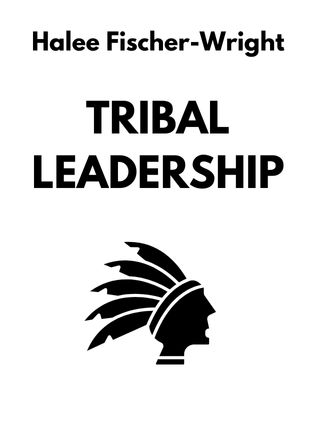
Tribal Leadership
Leveraging Natural Groups to Build a Thriving Organization
By Halee Fischer-Wright,
Published 06/2011
About the Author
Dave Logan, John King, and Halee Fischer-Wright are the masterminds behind Tribal Leadership: Leveraging Natural Groups to Build a Thriving Organization. Dave Logan is the co-founder and a former partner of CultureSync, a management consulting firm known for transforming organizations. John King, also a co-founder and senior partner of CultureSync, brings extensive experience in leadership coaching and organizational development. Halee Fischer-Wright, a former partner at CultureSync, now practices medicine in Denver, blending her knowledge of leadership with healthcare. Together, they have spent years studying tribal dynamics within companies, culminating in a revolutionary guide that helps leaders transform organizational cultures.
Main Idea
Tribal Leadership posits that every organization is essentially a collection of tribes, which are small groups of 20 to 150 people. These tribes form naturally, much like birds flock or fish school, and they are the fundamental building blocks of any large human effort, including businesses. The authors explain that the success of a company hinges on the strength and culture of its tribes. They introduce a five-stage model to evaluate and enhance tribal culture, helping organizations achieve unprecedented success by moving their tribes through these stages.
Table of Contents
- Introduction: The Concept of Tribal Leadership
- Part I: The Tribal Leadership System
- What is a Tribe?
- The Role of Tribal Leaders
- The Five Tribal Stages
- Part II: Your Journey as a Leader
- Stage One: On the Verge of a Meltdown
- Stage Two: Disconnected and Disengaged
- Stage Three: The Wild, Wild West
- Stage Four: Establishing Tribal Leadership
- Stage Five: Toward Vital Work Communities
- Part III: Owning Tribal Leadership
- Stabilizing Stage Four
- Triads and Stage Four Networking
- A Tribal Leader's Guide to Strategy
- Conclusion: The Future of Business
Introduction: The Concept of Tribal Leadership
The book opens with a powerful observation: humans naturally form tribes, and these tribes hold more influence than teams or even CEOs in determining the success of an organization. The authors argue that by understanding and leveraging tribal dynamics, leaders can guide their tribes from mediocrity to exceptional performance. This concept sets the stage for a deep dive into how tribes function and how leaders can cultivate a thriving tribal culture.
Part I: The Tribal Leadership System
What is a Tribe?
A tribe is defined as a group of 20 to 150 people who know each other well enough to say "hello" if they meet on the street. This size is optimal for human relationships and effective communication. The authors provide various examples of corporate tribes, such as the high-potential managers at a financial services company or the R&D division of a tech giant. They emphasize that tribes form naturally and are the fundamental units of any large organization, influencing productivity and innovation significantly.
Sign up for FREE and get access to 1,400+ books summaries.
You May Also Like
The Subtle Art of Not Giving a F*ck
A Counterintuitive Approach to Living a Good Life
By Mark MansonRich Dad Poor Dad
What the Rich Teach Their Kids About Money - That the Poor and Middle Class Do Not!
By Robert T. KiyosakiHow To Win Friends and Influence People
The All-Time Classic Manual Of People Skills
By Dale CarnegieQuiet: The Power of Introverts
The Power of Introverts in a World That Can't Stop Talking
By Susan Cain



















